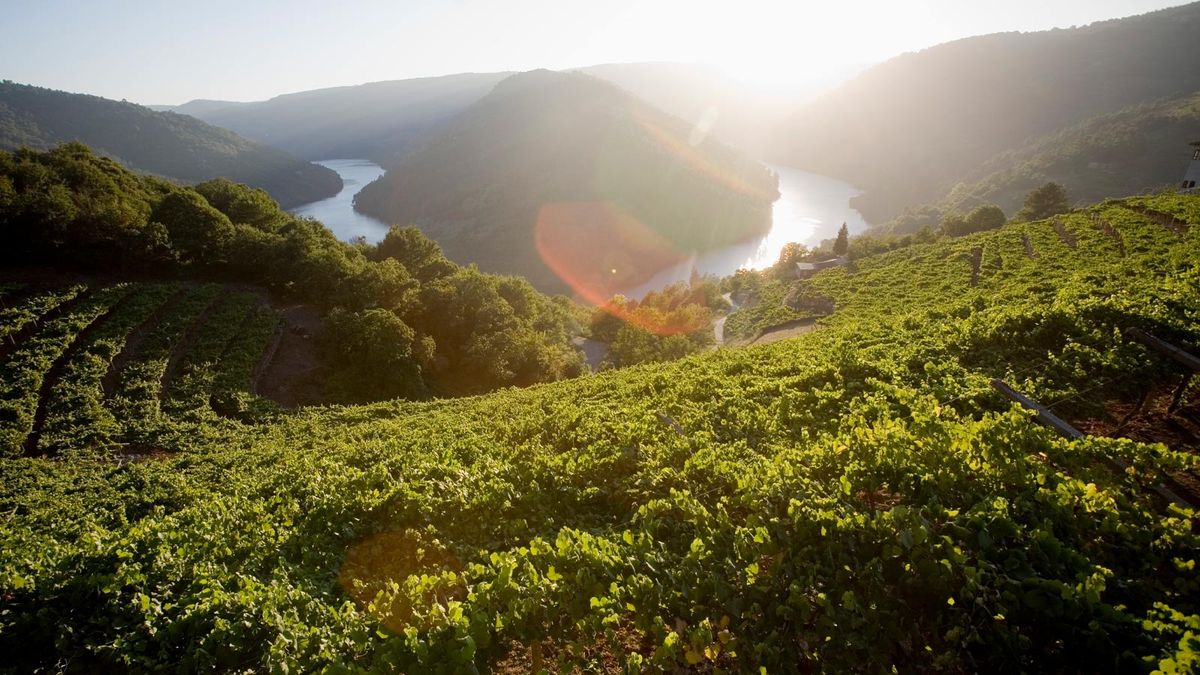“Unlike Rioja wines, Galician reds are lighter bodied,” says the server at O Curro da Parra restaurant in Santiago de Compostela as he pours me a glass. The garnet red wine splashes in my glass, intense red berry notes mingling with a faint hint of jasmine. Its velvety mouthfeel and soft, sweet tannins make it an incredibly easy-to-drink wine. “It’s made with 100 per cent Mencía grapes and comes from the Monterrei wine region of Galicia,” he adds. I might have found a new favourite.

Land’s end
Think of Spanish wine regions and the first name likely to come up is La Rioja — and for a good reason. For years, this region in north-central Spain has produced medium- to full-bodied wines with rich flavours. As a red wine drinker, I too reach for a Rioja often, although lately, I have come to favour wines from its south-west neighbour, Ribera del Duero. On my most recent visit to Spain, I travel further west to explore the intriguing world of Galician wines.

Located in the north-western corner of Spain, Galicia is an autonomous region with a long Atlantic coastline and Portugal on its southern end. It’s a wild landscape, green and lush, fed by rivers and estuaries, and often shrouded in mist because of its proximity to the ocean. Winemaking has been around probably since Roman times but certainly since the 8th or 9th centuries, aided by monks who isolated themselves in this remote corner of the country. Galicia has five wine regions that have Designation of Origin (D.O) i.e. Rías Baixas, Ribeiro, Ribeira Sacra, Valdeorras, and Monterrei. While individual terroirs create different wines, in general Galician wines tend to be light, fragrant, and acid-driven — and quite delicious. Over four days in Galicia, I tasted wines from all five regions and visited wineries in two of the regions that really stood out for me, Rías Baixas and Ribeira Sacra.
White gold
Rias Baixas has the most wineries and largest vineyards in Galicia, with Albariño the most dominant grape variety. Because it stretches along the coast, it is amongst the muggiest areas in Spain and mildew and rot are common problems. So, the winemakers here developed the parra system or granite pergolas six to eight feet off the ground on which the vines are trained. This allows air to circulate underneath, keeping the vines cool, and lets farmers plant other crops underneath. I visit Pazo de Rubianes (pazoderubianes.com) in the town of Vilagarcía de Arousa, where successive generations of the same family have been making wine since the 15th century! Pazos are very common across Galicia, a stately manor house that has an extensive garden, vineyards, a working farm, sometimes even sprawling woodlands.

Pazo de Rubianes is particularly known for its historical garden with more than 4,000 camellia trees that are in full bloom from late February to early March. After walking around the garden, I make my way to the vineyards that extend as far as the eye can see; from its far end, I spy the Atlantic Ocean. This is a family-run boutique winery producing three wines, Pazo de Rubianes, García De Caamaño, and 1411 (together just about 50.000 litres per year). Of these, the first is an award-winning straw-yellow wine with golden highlights and notes of apple, pear, orange peel, pineapple, and white flowers like jasmine and acacia. 1411 is a reserve wine, its name referencing the year the pazo came into existence. It has similar notes of green apple and pear but is also distinctly savoury and saline.
Wine heroes
Further inland, the dramatic landscape of Ribeira Sacra has been shaped by the rivers Sil and Miño, their gorges thick with forests and vineyards. This region produces just 5% of Galician wines and its most notable grape is Mencía. It’s a challenging variety that requires plenty of warmth and sunlight to ripen fully, so it’s often grown on steep slopes in a terraced manner. I get my first glimpse of these vineyards on a river cruise in the Sil canyon. The vineyard-dotted slopes seem scenic, but winemaking is an arduous task here. It’s called “heroic viticulture” or making wine against extreme geographical odds. The slopes are at an angle of 45° or more, making the grape harvest challenging. This is done manually, and the grapes are either transported back up the slopes on specially built tracks or via the river.

At Regina Viarum winery (reginaviarum.es), I get a close look at how steep the slopes are when I stand at the edge of the vineyards and see the sheer drop all the way down to the river. The winery itself is modern, established in 2001, but they have been using the ancient Mencía grapes (among others) to make some fantastic wines. I also get an immersive tour of the premises, beginning with a well-made film on heroic viticulture, followed by a peek into the cellars. The pièce de resistance is their tasting area, an all-glass balcony that looks out over the gorgeous expanse of vineyards and the river below. The winery produces excellent white, rosé, and red wines, but it’s their Ecológico wine that catches my fancy — a fruity red made with Mencía grapes from certified organic vineyards, which has been aged for six months in French and American oak barrels. With notes of ripe cherry and plum and sweet spices like vanilla and liquorice, this is a wine made to be savoured.

Essentials
Getting there and around: Regular high-speed AVE trains run between Madrid and Santiago de Compostela (about 3 hours). Beyond the capital city, I recommend renting a car to get around. Also, keep a translator app handy as many Galicians do not speak English and restaurant menus are in Spanish/Gallego (local dialect). Having an English-speaking guide will be of great help; Easy Galicia is a trusted operator in the region who can also plan your trip (easygalicia.com).
Where to stay: I stayed at Hotel Virxe da Cerca in Santiago de Compostela, a charming 3-star hotel housed in an 18th-ceentury building located just 10 minutes from the cathedral (pousadasdecompostela.com). The 5-star Parador de Santiago de Compostela is another great option right next to the cathedral. Paradores (paradores.es) is a Spanish boutique hotel chain with unique accommodation options in restored historic structures. In Ribeira Sacra, I stayed at Parador de Santo Estevo, a 10th-century Benedictine monastery that’s converted into a 4-star hotel. It retains the monastery’s three impressive cloisters while the monks’ cells have been converted into rooms with all the modern fittings. It offers two restaurants, a spa, and an outdoor Jacuzzi with stunning forest views.


